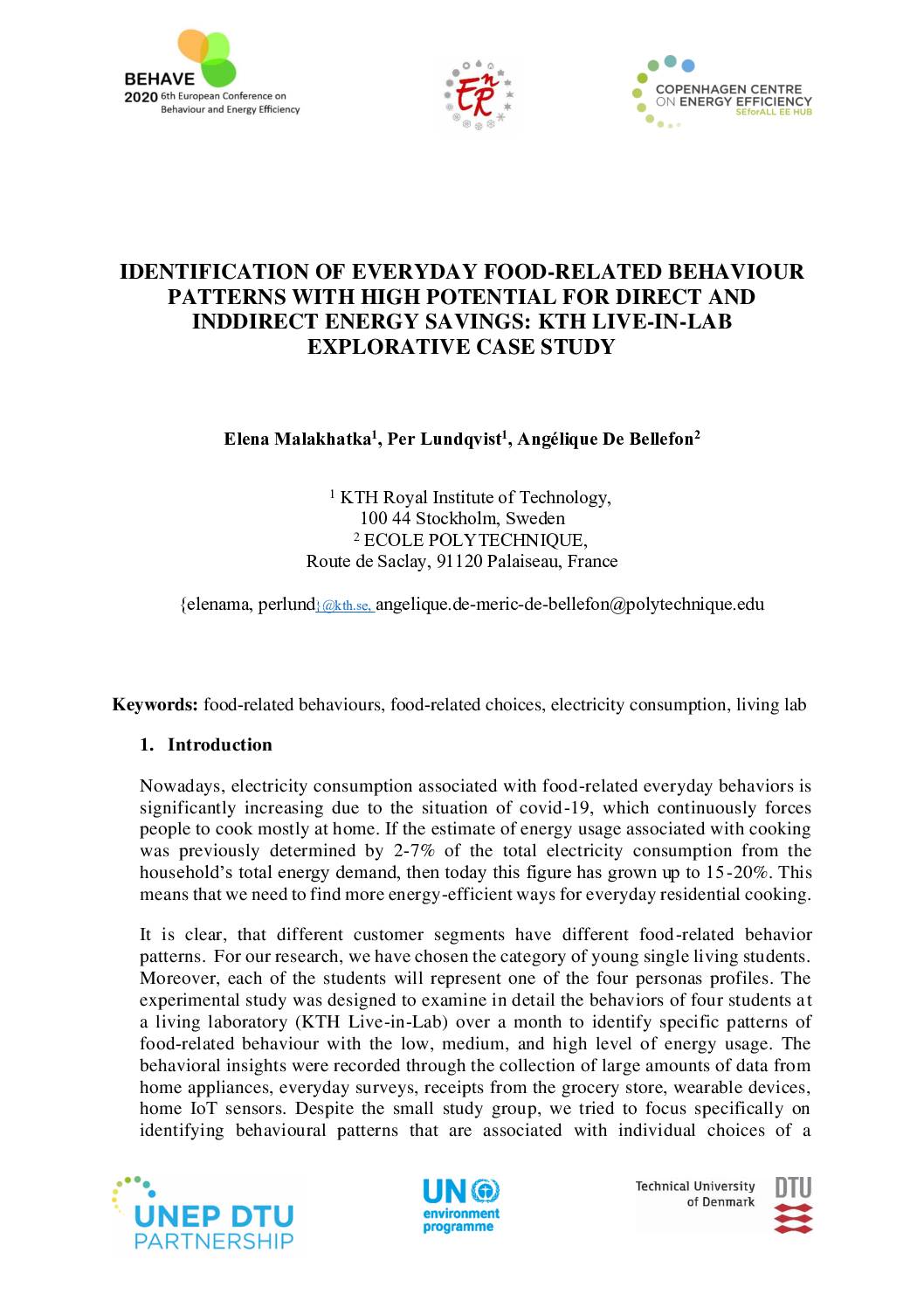Nowadays, electricity consumption associated with food-related everyday behaviors is significantly increasing due to the situation of covid-19, which continuously forces people to cook mostly at home. If the estimate of energy usage associated with cooking was previously determined by 2-7% of the total electricity consumption from the household’s total energy demand, then today this figure has grown up to 15 -20%. This means that we need to find more energy-efficient ways for everyday residential cooking. It is clear, that different customer segments have different food-related behavior patterns. For our research, we have chosen the category of young single living students. Moreover, each of the students will represent one of the four personas profiles. The experimental study was designed to examine in detail the behaviors of four students at a living laboratory (KTH Live-in-Lab) over a month to identify specific patterns of food-related behaviour with the low, medium, and high level of energy usage. The behavioral insights were recorded through the collection of large amounts of data from home appliances, everyday surveys, receipts from the grocery store, wearable devices, home IoT sensors. Despite the small study group, we tried to focus specifically on identifying behavioural patterns that are associated with individual choices of a
Download sourceShare this

Sector: Cross cutting
Country / Region: Global
Tags: electricity, electricity generation, energy, energy demand, home appliances, industrial energy demandIn 1 user collection: Session 6b: Promoting sustainable energy behaviours: policy instruments, interventions and evaluation of effects
Knowledge Object: Publication / Report
Publishing year: 2020
Author: Elena Malakhatka, Per Lundqvist, Angélique De Bellefon
Content:

